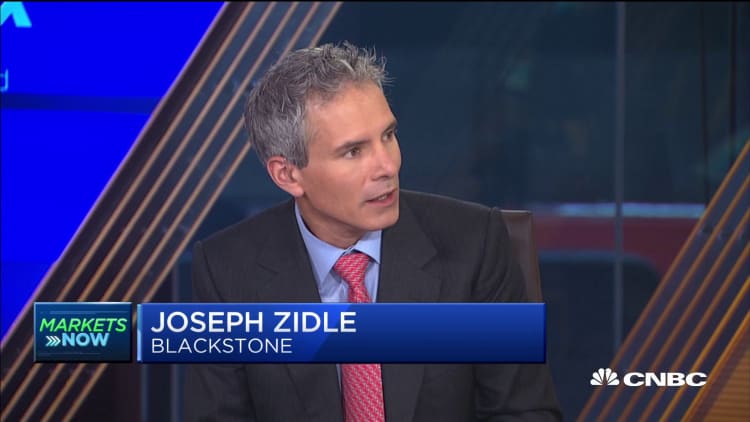
Stocks were little changed on Friday as investors took a breather following a wild month of trading.
The Dow Jones Industrial Average closed 41.03 points higher, or 0.1% at 26,403.28. The S&P 500 ended the day just above the flatline at 2,926.46 while the Nasdaq Composite slipped 0.1% to 7,962.88.
"This is a collective 'catch-your-breath' type of day with low volumes," said Willie Delwiche, investment strategist at Baird. "People are pausing ... waiting to see what next month and next week holds."
The major indexes posted their worst monthly performance since May. The Dow fell 1.7% in August while the S&P 500 lost 1.8%. The Nasdaq pulled back 2.6%. U.S.-China trade relations intensified this month, rattling investors.
The Cboe Volatility Index (VIX), widely considered to be the best fear gauge on Wall Street, traded as high as 24.81 in August before pulling back to around 18. Investors also loaded up on traditionally safer assets such as gold and silver this month. The SPDR Gold Trust (GLD) rose 8% in August while the iShares Silver Trust (SLV) surged 12.8%.
Last week, China retaliated against U.S. tariffs by unveiling levies of its own that target $75 billion in U.S. products. President Donald Trump then said the U.S. would hike tariffs on a slew of Chinese products.
"For U.S.-China trade to cause a sustainable rally, we need some proof of actual movement towards a trade 'truce,'" said Tom Essaye, founder of The Sevens Report, in a note. "While rhetoric has improved, that did not happen."
The U.S. and China have been engaged in a trade war since last year, with both countries slapping tariffs on billions of dollars worth of their products. This has led to worries over corporate profit growth and fears of a broader economic slowdown.
Tensions between two countries eased slightly this week, however. This propelled the S&P 500 up nearly 3% week to date, its best weekly performance since June. The broad index also snapped a four-week losing streak.
China's Foreign Ministry said on Friday that U.S. and Chinese negotiators are maintaining "effective communication" as the two countries try to strike a trade deal, Reuters reported. The report follows comments from the Chinese Ministry of Commerce on Thursday that hinted China will not escalate the trade war. Trump also said that some trade discussions had taken place on Thursday, with more scheduled over the coming weeks.
Investor sentiment was also dented this month as economic data pointed to a global growth slowdown, ramping up concerns of a possible recession.
The 10-year Treasury note yield fell below the 2-year rate this month. This is known as a yield-curve inversion and experts fear it because it has historically preceded recessionary periods in the U.S.
Still, recent U.S. economic data has been strong. U.S. consumer spending rose 0.6% in July, the Commerce Department said Friday, topping a Reuters estimate of 0.5%. Meanwhile, consumer confidence remains near its highest level in nearly 20 years.
—CNBC's Sam Meredith contributed to this report.


